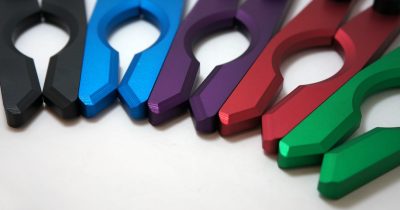Stiffness vs. Strength
Stiffness vs. Strength: Key Differences and Factors to Consider
When designing mechanical components or structures, two critical properties come into play: stiffness and strength. While they are often confused, they serve different roles in engineering and material selection. This article breaks down the differences, key factors to consider, and how to apply these concepts in real-world applications.
What is Stiffness?
Definition:
Stiffness is a material’s ability to resist deformation under an applied force. It is measured as the ratio of force to displacement and is often expressed as:
Stiffness(k)=Force(F)Displacement(δ)\text{Stiffness} (k) = \frac{\text{Force} (F)}{\text{Displacement} (δ)}
Key Points About Stiffness:
- Stiff materials deform less when subjected to a given force.
- Stiffness is influenced by material properties (Young’s modulus, E) and geometry (cross-sectional area and shape).
- It is crucial for precision engineering, aerospace, and load-bearing structures.
Relative Stiffness of meviy Materials:
- Steel: All steels have high stiffness, making them ideal for structural applications. Alloy steels like 4140 have very high stiffness. Stainless steels have lower stiffness than other steel materials.
- Aluminum: Aluminum alloys have moderate stiffness. 7075 is a structural aluminum grade with higher stiffness than other Aluminum alloys. 5052 has lower stiffness than other aluminum materials.
- Resin: Generally lower stiffness. Materials like glass filled PET have higher stiffness than other resins. Materials like ABS have lower stiffness than other resins.
What is Strength?
Definition:
Strength is a material’s ability to withstand an applied force without failure (breaking or yielding). It is typically measured in terms of:
- Yield Strength (σy): The stress at which a material starts to deform permanently.
- Ultimate Strength (σu): The maximum stress a material can endure before breaking.
Key Points About Strength:
- A strong material can withstand higher loads without failure.
- Strength is primarily determined by material composition and microstructure.
- Strength and stiffness are independent—a material can be strong but not stiff (e.g., rubber) or stiff but not strong (e.g., glass).
Relative Strength of meviy Materials:
- Steel: Steels are generally high strength. Tool steels like O1 have very high strength. 1049 tempered steel has higher strength than other carbon steels. Stainless steels have lower strength than other steel materials.
- Aluminum: Moderate strength but excellent strength to weight ratio. 7075 has the highest strength of the aluminum alloys. 5052 has lower strength than other aluminum materials.
- Resins: Some engineered plastics like UHMWPE have very high strength rivaling many steels. Materials like PP have lower strength than other resins.
Stiffness vs. Strength: Key Differences
| Property | Stiffness | Strength |
| Definition | Resistance to deformation | Resistance to failure or fracture |
| Measured in | Force/Displacement (N/m) | Stress (Pa or N/m²) |
| Influencing Factor | Young’s modulus (E), geometry | Material composition, microstructure |
| Example of High Property | 4140 Alloy Steel | O1 Tool Steel, UHMWPE |
| Example of Low Property | ABS | PP |
Choosing Between Stiffness and Strength in Design
When to Prioritize Stiffness:
- Precision Components: Minimizing deflection in machines (e.g., robotic arms).
- Structural Engineering: Bridges and buildings to prevent excessive bending.
- Aerospace & Automotive: Lightweight but rigid structures for performance.
When to Prioritize Strength:
- Load-Bearing Applications: High-stress environments like cranes and pressure vessels.
- Impact Resistance: Safety equipment like helmets and car bumpers.
- Wear and Tear Resistance: Gears, fasteners, and industrial machinery.
Balancing Both:
In most applications, both stiffness and strength are essential. For example:
- Aircraft Wings: Must be stiff to resist bending but strong enough to withstand aerodynamic loads.
- Car Chassis: Requires stiffness for handling and strength for crash safety.
- Bridges: Must have high stiffness to reduce deflection and high strength to handle weight loads.
Conclusion
Understanding the difference between stiffness and strength is critical in material selection and structural design. Stiffness controls deformation, while strength determines failure resistance. The right balance between the two ensures durability, performance, and safety in engineering applications.
Would you like recommendations for specific materials or applications? Send us an email at meviy-usa@misumiusa.com






